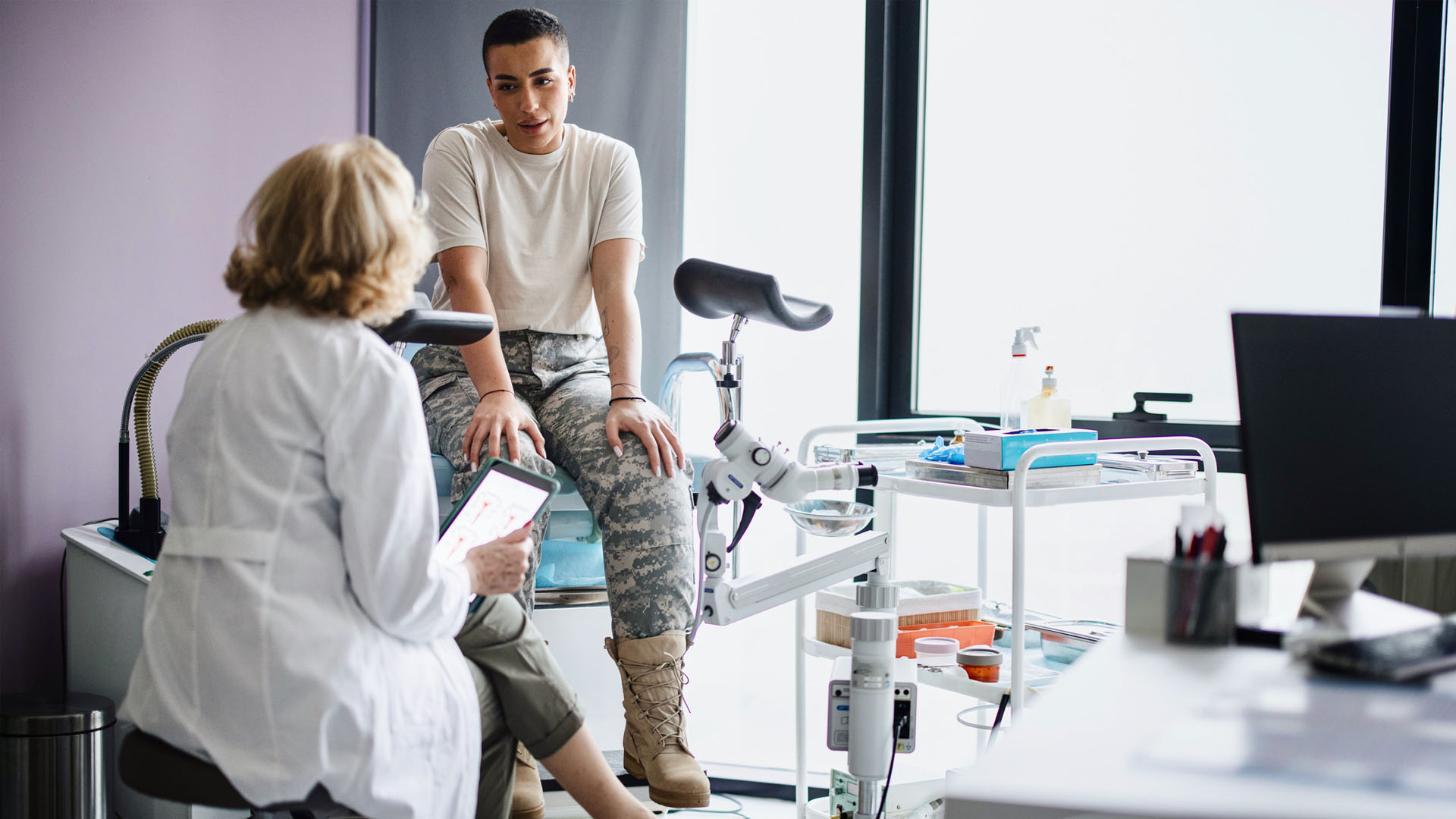Endometriosis: Causes, symptoms and treatments
Endometriosis is a medical condition that affects 1 in 10 women. It occurs when the lining of the uterus, called the endometrium, grows in other places.

Endometriosis is a medical condition that occurs when the lining of the uterus, called the endometrium, grows in other places, such as the fallopian tubes, ovaries or along the pelvis. When that lining breaks down, as the regular lining in the uterus does during menstruation, it has nowhere to go. This can cause cysts, heavy periods, severe cramps and even infertility.
About five million women in the United States have endometriosis, but the true number of cases may be much higher because not all women with the condition have symptoms, according to the National Institute of Child Health and Human Development (NICHD).
Endometriosis is classically defined as a gynecological disease, but this description may no longer reflect its true scope and manifestations, according to a 2021 review published in the Lancet. Since the full effects of endometriosis are not fully recognised and may extend far beyond the pelvis, it is now considered a systemic condition.
What are the causes of endometriosis?
The exact cause of endometriosis is unknown, but a number of factors appear to be involved, said Dr. Claudia Pastorelli Mosca, a gynecologist and medical advisor at Flo Health, a period tracking app.
The oldest and most known theory is retrograde menstruation implantation. "This would be the endometrial tissue flowing backwards through the fallopian tubes to the peritoneal cavity during menses, fixating there," Pastorelli Mosca told Live Science. "This tissue would theoretically suffer the same alterations of the in-uterus endometrium when exposed to estrogen, and grow."

Pastorelli Mosca received her medical degree from the University of Medicine, Mogi das Cruzes in Brazil before completing her residency in obstetrics and gynecology at Sistema Muncipal de Saúde de São Paulo. She has over five years of experience working in obstetrics and gynecology.
However, she said, almost 90% of people with fallopian tubes have retrograde menstruation, but not all of them have endometriosis. This suggests it might not be the only factor, and that there are other factors contributing to the development of the condition.
One of these factors could be an altered immune response, Pastorelli Mosca said. Immune cell dysfunctions and an inflammatory environment characterize all forms of endometriosis, according to a 2021 review in the International Journal of Molecular Sciences. Evidence suggests that patients with this condition may be genetically predisposed to immune responses that shape up endometriosis lesions, the review researchers noted.
Get the world’s most fascinating discoveries delivered straight to your inbox.
Another theory is lymphovascular metastasis, which is a well-known mechanism in the spread of human cancer, Pastorelli Mosca said. "It would explain endometrial tissue spreading from the uterus to the abdominal cavity through the lymphatic system and blood stream," she said.
Emerging evidence suggests endometriosis may be linked to imbalances in gut and reproductive tract bacteria composition, according to a 2021 review in the International Journal of Molecular Sciences. Patients with endometriosis tend to have reduced numbers of Lactobacillus bacteria and an increased amount of bacteria related to bacterial vaginosis. This may disrupt the normal functioning of the immune system and increase inflammation levels, the review researchers suggested. Over time, this immune dysregulation could create an environment that drives the vicious cycle of endometriosis onset and progression.
What are the symptoms of endometriosis?
The main symptom of endometriosis is pain. This can be very variable, both in where the pain arises and also the severity of pain that women experience, said Dr. Susanna Unsworth, a women's health specialist in England and in-house gynaecologist for INTIMINA.
"The most common pain that women describe arises in the pelvis, lower tummy or lower back," Unsworth told Live Science. "This pain often has a cyclical nature — meaning it is worse just before or during your period."

While it isn't unusual for people to experience some pain during their period, the pain should not impact the ability to do day-to-day activities. Anyone experiencing significant pain associated with their period that does not go away with simple pain relief should speak to their doctor.
Pain can occur in different places, usually depending on where the deposits of endometriosis form. Women with the condition may also experience pain while having sex, fatigue, painful urination or bowel movements during menstruation, and gastrointestinal upset, according to the Endometriosis Association. Infertility and bleeding between periods are also symptoms of endometriosis.
Some women do not experience any symptoms at all, but realize they have the condition when they are trying to get pregnant.
How is endometriosis diagnosed?
Endometriosis is often diagnosed based on someone's description of their symptoms. There is not an easy test that can be done to formally diagnose the condition.
The only way for endometriosis to be diagnosed for certain is through laparoscopy, which is a minor surgical procedure that involves a thin scope being inserted into the abdomen to view the pelvic organs, according to the NICHD. If a doctor sees extra endometrial tissue during the laparoscopy, they may remove it there and then.
However, other basic medical tests are typically performed first. These include a pelvic exam, where a doctor manually feels for abnormalities such as cysts, or an abdominal or vaginal ultrasound, which uses sound waves to create an image of the uterus and reproductive organs. Vaginal and abdominal ultrasounds cannot definitively diagnose endometriosis, but they can test for cysts that may be caused by the condition, according to the NICHD.
A 2021 review published in the International Journal of Environmental Research and Public Health suggests that the stigma and lack of public discourse around endometriosis may explain why many women are not seeking a diagnosis.
What are the risk factors for endometriosis?
According to the NICHD, women are at higher risk for endometriosis if they:
- Have a mother, sister, or daughter with endometriosis
- Started their periods at an early age (before age 11)
- Have short monthly cycles (less than 27 days)
- Have heavy menstrual periods that last more than 7 days
- Are unable to conceive
Some studies also suggest that having a lean body mass or low body fat may increase a woman's risk for endometriosis, according to a 2016 review published in the journal Nursing Research.
According to NICHD, factors that may lower the risk for endometriosis include:
- Pregnancy
- Periods that started late in adolescence
- Breastfeeding
What are potential complications of endometriosis?
The biggest complication with endometriosis is fertility problems, according to a 2022 review published in the journal Frontiers in Endocrinology. About a third to a half of women with endometriosis have difficulty getting pregnant, and up to 50% of women who are infertile are found to suffer from this condition. However, the mechanisms behind endometriosis-associated infertility are not fully understood, the review researchers noted.
"Endometriosis may be severe enough to cause damage to one or more of the organs involved in conception, such as the uterus or ovaries," Pastorelli Mosca said. "Many people with endometriosis also experience painful sex, which can make conceiving more difficult. This is because penetration can pull and stretch endometriotic lesions, especially if they've grown behind the vagina or lower uterus."

The physical complications of endometriosis will often depend on where the deposits form, Unsworth said.
"Some women can develop cysts around the ovaries, which may lead to early onset of menopause, either due to the damage itself or the need to remove the ovaries because of the cysts," she said. Formation of endometriosis around the bowel or bladder can also affect these organs. This may require surgery to remove sections of bowel affected, or may impact on how well the bladder functions.
Preliminary evidence also suggests that endometriosis may increase the risk of cardiovascular disease, according to a 2022 review published in the European Heart Journal. However, more studies are needed to understand the mechanisms behind this association.
Endometriosis may also have severe psychological effects, causing depression, anxiety, and compromising social relationships, according to a 2020 review in the International Journal of Environmental Research and Public Health.
How is endometriosis treated?
Currently, there is no cure for endometriosis. However, there are ways to manage the symptoms and help improve the quality of life for those affected by the condition, Pastorelli Mosca said.
Treatment for endometriosis can involve pain medication (for severe cramping), hormone therapy to slow the growth of the endometrial tissue, and surgery to remove the tissue, according to the NICHD. A number of factors go into determining a woman's treatment, including age, the severity of symptoms, and whether the patient wants to become pregnant.
For women who are not trying to become pregnant, hormonal birth control pills are usually the first step in treatment, according to a 2021 review published in the journal BMC Women's Health. Guidelines issued by the American College of Obstetricians and Gynecologists and American Society for Reproductive Medicine agree that the combined oral contraceptive pill and progestogens are considered to be the most suitable treatments for endometriosis associated pain.
For women whose symptoms are not relieved by medication, surgery is another treatment option. Laparoscopy and laparotomy are common forms of surgery used to treat endometriosis. They require going in through the abdominal region to remove the endometrial tissue. Most women experience relief from pain after surgery, but the pain may come back within two years, according to the NICHD. However, if symptoms keep coming back after these surgical procedures, a hysterectomy, or total removal of the uterus, may be a "last resort" option.
Additional resources
- Anna GoraHealth Writer



